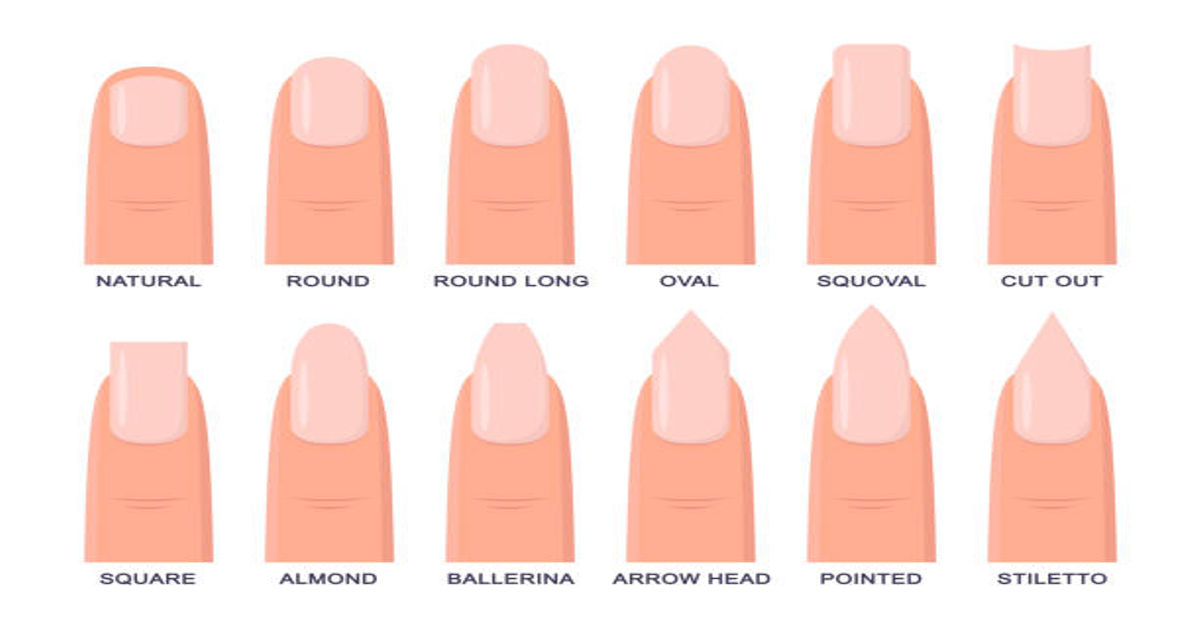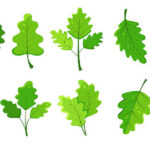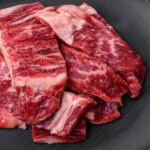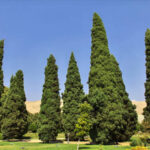The shape of our nails may seem like a small detail, but it plays a surprisingly large role in the overall appearance of our hands. Whether natural or acrylic, nails express personal style, fashion preference, and even how we maintain hand health. From classic round shapes to edgy stilettos, every nail contour has a personality of its own. Understanding each type helps you not only make style decisions but also choose what suits your lifestyle and nail strength.
This article will take you through every popular nail shape, their characteristics, best use cases, maintenance tips, and suitability for different hand types. Additionally, you’ll find a comparison table that breaks down the essential differences in a clear, simple format.
1. The Importance of Nail Shape
Before we dive into the types, it’s worth knowing why nail shape matters. Nail shapes affect both function and aesthetics. For example, a nurse or typist might prefer shorter, rounder nails that don’t interfere with work, while a model might choose elongated coffin nails for a glamorous look. Nail shapes can make fingers appear longer, slimmer, or even more youthful.
Your nail shape also affects durability. Some shapes resist breakage better, while others—though stunning—require delicate care. Choosing the right one involves balancing style, strength, and practicality.
2. Understanding Nail Anatomy
To shape nails properly, it’s helpful to understand basic nail anatomy. The human nail consists of several parts:
| Part | Description |
|---|---|
| Nail Plate | The hard visible portion of the nail that covers the fingertip. |
| Nail Bed | The skin beneath the nail plate that supplies nutrients and support. |
| Cuticle | The thin layer of skin at the base of the nail, protecting against infection. |
| Lunula | The white crescent at the nail’s base (visible in some people). |
| Free Edge | The part of the nail that extends past the fingertip and can be shaped. |
3. Common Nail Shapes and Their Features
There are over a dozen recognized nail shapes, each with subtle differences. Below is an in-depth guide to the most popular ones.
A. Round Nails
Round nails are one of the simplest and most traditional shapes. They follow the natural contour of the fingertip with soft, curved edges.
Best For: People who prefer low-maintenance nails or have shorter fingers.
Aesthetic: Clean, natural, and professional.
Care: Minimal; requires occasional trimming and gentle filing.
Round nails are less prone to breakage since there are no sharp corners. This makes them perfect for those with active lifestyles or jobs that involve frequent hand use.
B. Square Nails
Square nails have straight edges and a flat top. They became extremely popular in the 1990s and remain a timeless salon favorite.
Best For: Those with long nail beds or narrow fingers.
Aesthetic: Bold, structured, and chic.
Care: Requires regular shaping to maintain straight edges.
The square shape looks best with a glossy finish or French manicure. However, it may be prone to chipping at the corners if nails are thin or brittle.
C. Oval Nails
The oval shape combines elegance and strength. It extends slightly beyond the fingertip with rounded edges tapering into a soft oval.
Best For: Those seeking a feminine and elongated look.
Aesthetic: Graceful and classic; elongates short fingers.
Care: Moderate maintenance; requires careful filing to preserve symmetry.
Oval nails are often considered ideal for formal settings or elegant nail art, as they complement both short and long nail lengths.
D. Almond Nails
Almond nails resemble the shape of an almond seed—slightly tapered sides with a rounded peak at the tip. This shape is a favorite among fashion lovers.
Best For: Medium to long nails.
Aesthetic: Slimming and sophisticated.
Care: Requires strength; weaker nails may break near the tip.
The almond shape gives fingers an elongated appearance, perfect for those who desire a refined and graceful hand look. Reinforced gels or acrylics can help maintain their structure.
E. Coffin (Ballerina) Nails
Coffin nails—also known as ballerina nails due to their resemblance to a ballerina slipper—are square at the tip but tapered along the sides.
Best For: Long acrylic or gel nails.
Aesthetic: Edgy, glamorous, and trendy.
Care: High maintenance; requires regular salon visits.
They’re popular among celebrities and ideal for nail art, rhinestones, and elaborate designs. However, natural nails often can’t sustain this shape unless very strong.
F. Stiletto Nails
Named after the stiletto heel, these nails are long and sharply pointed. They’re highly dramatic and best suited for fashion or artistic expression.
Best For: Artificial nails or high-strength natural nails.
Aesthetic: Fierce, bold, and statement-making.
Care: Very high; tips break easily without reinforcement.
Because of their pointed ends, stiletto nails are impractical for everyday work but unmatched in creativity and glamour for photoshoots or special occasions.
G. Squoval Nails
Squoval nails blend the straight edges of square nails with the gentle curves of oval ones. This hybrid shape offers the best of both worlds.
Best For: Any nail length.
Aesthetic: Balanced and natural.
Care: Easy to maintain and resistant to chipping.
Squoval nails are widely recommended by nail professionals for people who want a flattering yet durable shape.
H. Ballerina vs. Coffin: The Subtle Difference
Although often used interchangeably, some manicurists make a slight distinction between ballerina and coffin nails. Ballerina nails have a slightly softer taper and less pronounced flat top, whereas coffin nails are sharper at the edges.
For practical purposes, they belong to the same family but differ subtly in proportion and length.
I. Edge Nails
Edge nails have a pronounced ridge down the center and a triangular tip. They are bold and geometric, often created using gel or acrylic systems.
Best For: Nail artists or experimental designs.
Aesthetic: Architectural and unique.
Care: Needs professional shaping and frequent upkeep.
This shape is eye-catching and ideal for those who like unconventional styles.
J. Lipstick Nails
This newer, trendier shape mimics the slanted tip of a lipstick bullet. One side of the nail is slightly higher than the other, creating a diagonal finish.
Best For: Long, strong nails or acrylics.
Aesthetic: Modern and fashion-forward.
Care: Requires precision filing.
Lipstick nails are great conversation starters but may not be practical for daily tasks like typing or texting.
4. Comparison Table of Popular Nail Shapes
| Nail Shape | Edge Type | Best For Nail Length | Durability | Maintenance Level | Visual Effect |
|---|---|---|---|---|---|
| Round | Curved | Short | High | Low | Natural, neat |
| Square | Flat | Medium | Medium | Moderate | Bold, modern |
| Oval | Rounded | Medium | Medium | Moderate | Feminine, elongated |
| Almond | Pointed-Round | Long | Moderate | High | Slimming, chic |
| Coffin | Flat-Tapered | Long | Low | High | Glamorous, dramatic |
| Stiletto | Sharp | Long | Low | Very High | Edgy, fierce |
| Squoval | Flat-Round | Any | High | Low | Balanced, classic |
| Lipstick | Slanted | Long | Low | High | Trendy, creative |
| Edge | Angular | Medium | Moderate | High | Unique, geometric |
5. Choosing the Right Nail Shape for Your Hands
Different nail shapes suit different hand types. Selecting the right one involves evaluating your nail bed width, finger length, and lifestyle.
| Hand Type | Recommended Nail Shape | Why It Works |
|---|---|---|
| Short Fingers | Oval, Almond, or Stiletto | Adds illusion of length |
| Long Fingers | Square or Squoval | Balances proportions |
| Wide Nail Beds | Almond or Oval | Slims down appearance |
| Narrow Nail Beds | Square or Coffin | Adds structure and width |
| Active Lifestyle | Round or Squoval | Prevents breakage |
| Artistic/Fashion Focused | Coffin or Stiletto | Allows elaborate designs |
If you type frequently or handle objects daily, short round or squoval nails are your best companions. For special events, go bold with coffin or almond shapes.
6. Tools and Techniques for Perfect Shaping
To achieve your desired nail shape safely and neatly, you’ll need the right tools and techniques. Using improper filing motions can cause nails to peel or crack.
Essential Tools:
- Nail file (180–240 grit) for shaping.
- Buffer block for smoothing the surface.
- Cuticle pusher to maintain clean edges.
- Nail clippers for trimming length.
- Nail strengthener or base coat for protection.
Shaping Steps:
- Trim nails slightly longer than your target length.
- File in one direction only (avoid sawing back and forth).
- Refine edges according to the desired shape.
- Buff lightly to remove rough edges.
- Seal with a top coat for durability.
Always file before applying polish to prevent cracks.
7. Maintaining Healthy Nails
Healthy nails form the foundation of beautiful shapes. Here are the key practices to maintain nail strength:
- Hydration: Apply cuticle oil and hand cream daily.
- Diet: Include biotin-rich foods like eggs, nuts, and whole grains.
- Protection: Wear gloves when using harsh detergents.
- Avoid Over-filing: Over-thinning the edges weakens the nail plate.
- Regular Trimming: Keeps nails at manageable length and prevents snags.
Also, giving your nails a “breather” from acrylics or gel extensions helps prevent discoloration and brittleness.
8. Nail Shape Trends Through History
Nail shapes have evolved with culture and fashion trends.
- 1920s–1940s: Women favored oval or almond nails with red polish—a sign of glamour.
- 1950s: Square and short nails gained popularity due to practicality.
- 1990s: Sharp square acrylics became the standard of modern chic.
- 2000s–Present: Experimentation flourished—stilettos, coffins, and lipstick nails rose as expressive art forms.
Nail shapes mirror social change: as fashion grows bolder, nail aesthetics become more experimental.
9. Artificial vs. Natural Nail Shaping
Both natural and artificial nails can be shaped into most styles, but their care differs.
| Type | Advantages | Considerations |
|---|---|---|
| Natural Nails | Healthier, breathable, no chemical exposure | Limited length and strength |
| Acrylic Nails | Long-lasting, flexible for creative shapes | Requires professional removal |
| Gel Nails | Natural look, lightweight | Can weaken natural nail if overused |
| Dip Powder | Stronger finish, less odor | May thicken nail bed with repeated use |
When creating shapes like stiletto or coffin, artificial nails offer better strength. However, if you prefer a natural, breathable feel, oval or squoval shapes are ideal.
10. Nail Shape and Personality Connection
Interestingly, many people believe nail shape reflects personality traits. While not scientifically proven, these associations often ring true in fashion psychology:
| Shape | Associated Traits |
|---|---|
| Round | Calm, organized, practical |
| Square | Strong, confident, assertive |
| Oval | Elegant, balanced, friendly |
| Almond | Creative, romantic, expressive |
| Stiletto | Bold, daring, attention-loving |
| Coffin | Glamorous, trend-conscious |
| Squoval | Reliable, balanced, adaptable |
| Lipstick | Artistic, modern, experimental |
Your nail shape can serve as a silent expression of who you are and what you value in style.
11. Mistakes to Avoid When Shaping Nails
Even with the best intentions, small mistakes can ruin a good manicure. Here are common errors and how to fix them:
- Filing in both directions: Always file in one direction to prevent splitting.
- Skipping base coats: Weakens nail protection.
- Choosing shapes unsuited to nail length: Short nails cannot support pointed shapes without risk of breakage.
- Overextending artificial nails: Causes lifting or damage to natural nail beds.
- Neglecting cuticle care: Leads to uneven edges and poor polish adherence.
Patience and precision matter far more than speed when shaping nails.
12. Nail Shapes and Nail Art Compatibility
Certain nail shapes pair better with specific nail art designs.
| Shape | Best Nail Art Styles |
|---|---|
| Round | Minimalist, solid colors, French tips |
| Square | Geometric designs, checker patterns |
| Oval | Floral motifs, ombre gradients |
| Almond | Rhinestones, chrome finishes |
| Coffin | Glitter, 3D embellishments |
| Stiletto | Abstract art, dramatic accents |
| Squoval | Classic manicures, nude tones |
| Lipstick | Modern lines, asymmetric art |
When planning nail art, consider the shape’s surface area—longer nails allow more design space, while shorter ones benefit from simplicity.
13. Nail Shaping for Men
Men also benefit from well-shaped nails, though styles are subtler.
Round or square shapes are most common for men, as they maintain cleanliness and symmetry without appearing polished. Proper trimming, buffing, and cuticle care create a professional, hygienic look.
14. Professional vs. At-Home Shaping
At-Home:
- Ideal for round, square, or squoval nails.
- Cost-effective and easy to maintain weekly.
Professional Salon:
- Necessary for acrylic or gel-based shapes like almond, coffin, or stiletto.
- Provides symmetry and precise filing.
If attempting bold shapes, consult a trained technician to prevent over-filing or nail bed stress.
15. Caring for Artificially Shaped Nails
Artificial shapes require consistent maintenance.
Tips:
- Refill every 2–3 weeks to prevent lifting.
- Avoid using nails as tools.
- Use cuticle oil to maintain flexibility.
- Limit exposure to acetone-based removers.
- Reapply top coat weekly for shine and protection.
Proper care ensures your chosen shape remains beautiful and durable.
16. The Future of Nail Shapes
With digital culture driving fashion, the future of nail shapes lies in customization and 3D art. Augmented nail designs, magnetic polish, and hybrid shapes like “flared squovals” are already trending. Sustainability is also emerging, with eco-friendly gels and natural strengthening treatments replacing harsher chemicals.
Nail shapes are no longer just beauty choices—they’re a form of self-expression and identity.
Conclusion
From timeless round tips to futuristic stiletto points, nail shapes offer endless ways to express yourself. The right shape enhances not only your nails but also your confidence, hand posture, and overall elegance.
Choosing a shape involves balancing practicality, aesthetics, and nail health. Whether you’re a minimalist opting for a simple squoval or a trendsetter rocking long coffin nails, remember that beautiful nails start with strong, well-cared-for foundations.
Your hands tell your story—make sure your nails narrate it beautifully.
FAQs
1. Which nail shape is the strongest?
Round and squoval nails are considered the strongest because they have no sharp edges that can catch or break easily. Their curved structure distributes pressure evenly across the nail plate.
2. What nail shape makes fingers look longer?
Almond and oval shapes visually elongate the fingers, giving them a slender and graceful appearance, especially for people with shorter nail beds.
3. Are coffin and ballerina nails the same?
They are very similar but slightly different. Coffin nails are sharper and more angular at the edges, while ballerina nails have a softer taper and slightly narrower flat top.
4. Can natural nails be shaped into stiletto or coffin styles?
Yes, but only if your nails are thick and strong. Otherwise, it’s safer to create these shapes with acrylics or gels for durability.
5. How often should I reshape my nails?
You should reshape every 7–10 days depending on growth. Regular maintenance prevents uneven tips and keeps your chosen shape intact.











